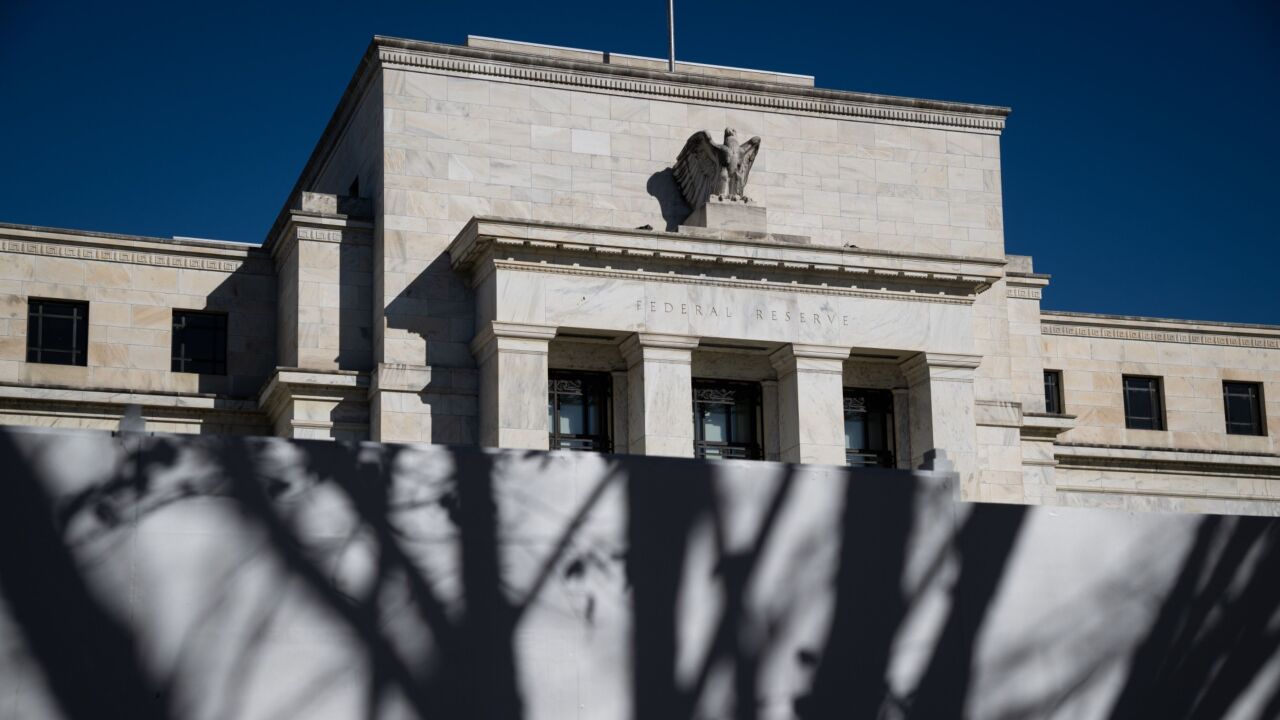When the card networks' October deadline for EMV-chip card adoption arrives, things will likely have changed very little compared to how they are today.
Various estimates do not yet show a mad rush to migrate to EMV security by Oct. 1, the date at which card networks will shift the fraud liability to the company not able to handle EMV payments. But EMV will gain momentum by the end of 2015, as more companies ramp up their conversion efforts and the holdouts feel the sting of payment card fraud.
But there is still a lot of ground left to cover. An Aite Group report published earlier this year warned that a third of small U.S. merchants did not even know what EMV is, and a July poll by GfK Public Affairs and the Associated Press suggests only one in 10 Americans has a chip-enabled card today.
Visa Inc.'s own numbers show about 16% of its 700 million cards in the U.S. are converted to EMV but to Visa, the glass is 16% full, not 84% empty, and it's filling fast.
"The forecast is still that 63% of the cards will be EMV by the end of the calendar year, but we are hoping for new data soon," said Stephanie Ericksen, vice president of risk products for Visa. "A lot of issuers have been increasing their issuance of EMV cards for the final few months leading into the liability shift date."
Visa wants new data to compare against other EMV studies and polls that predict far less adoption, Ericksen said. "We are not sure where the other data comes from, but that is why we want to do an updated survey."
In illustrating that its education and awareness programs are working, Visa also says its recent studies charted 83% awareness of chip cards amongst consumers in May, and 89% in July.
Overall, Visa is not seeing any weakness in numbers on the issuing side, while major retailers are preparing for EMV acceptance and smaller retailers continue to learn more about the new technology,
Aite Group fraud analyst and researcher Julie Conroy has monitored EMV card issuance for the past year. "I am still standing by my [research showing] 70% of all credit cards and 41% of debit cards will be EMV by the end of the year," Conroy said.
Any predictions that fall substantially below this estimate may be looking at too narrow an audience, she said. "If they poll a younger skew of consumers who are predominantly debit card users, the EMV debit cards are lacking."
In general, merchants who have upgraded are planning on being able to accept EMV credit cards by the liability shift, but may hold off on debit cards until after the heavy holiday season to make certain they have a handle on the new process for
Visa has stuck to its message of Oct. 1 being the "a key date in order to get the market moving," while agreeing it will take several years to obtain critical mass with chip cards, Ericksen added.
Acquirers for all major card brands know that the smallest merchants are the most difficult to convert because those merchants don't deal with much counterfeit fraud and can't easily justify the cost of an upgrade.
"In many ways, for a small business, EMV can be the same as upgrading or changing out a cell phone," Ericksen said. "They can get a new terminal, maybe for free, depending on the processor, and maybe a better processing contract and better security because of the new technology," she added.
A segment of the small-business market feels it has no need for EMV, particularly the micromerchants who have personal relationships with their customers. These include plumbers, gardeners, tutors and hairdressers.
"Those businesses are probably not getting a huge amount of fraud coming their way, but many small businesses, such as a coffee shop, may not see chargebacks anyway," Ericksen said. "Most issuers don't charge back counterfeit fraud on transactions for less than $25 or $35 because the cost of the chargeback is more than that in terms of processing."
Many of those small-business owners are also seeking mobile alternatives to EMV chip card acceptance, creating opportunities for companies like
"An interesting dynamic is taking place because these business owners don't want the card-reader dongles, which they could lose, or any EMV hardware," said Greg Goldfarb, CEO of Flint, uses the phone's camera to capture card data.
Square is similarly streamlining its hardware options; its contactless card reader, which it is promoting as an Apple Pay device, can read EMV-chip card transactions but not swiped magstripe transactions.
Service businesses are not heavy targets of fraudsters because they are not selling "things that you can go put on eBay and turn into cash money," Aite's Conroy said. Those types of businesses may never turn to EMV terminals and will instead stick with mobile card acceptance, she added.





